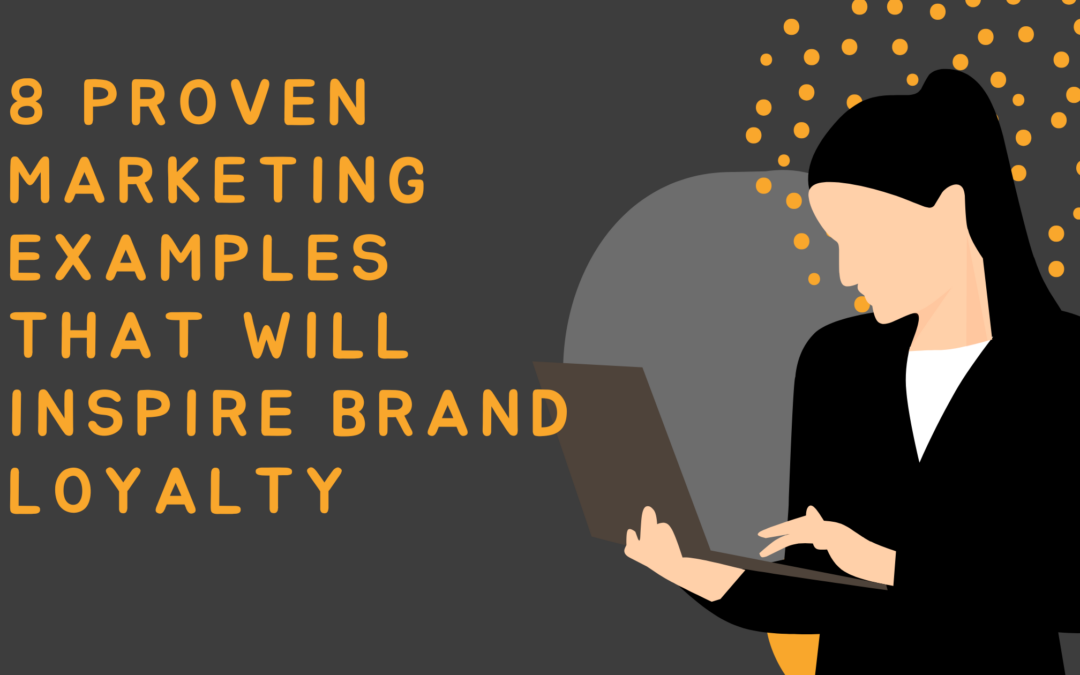Brands have competition. So how do brands set themselves apart and build a loyal following?
Successful brands are crafting marketing strategies driven by their company’s mission and vision rather than focusing on their bottom line.
Brand loyalty has shifted. As John White discusses in his article, Brand Loyalty is Not Dead (It Merely Shifted),
“Quirky advertising alone is no longer enough to capture and retain a consumer base, and getting existing customers to stick around is harder than ever. But if you have a quality product, good customer service, and the will to do whatever it takes, you can capture the next generation of loyal customers.”
There is a pivotal shift in brand marketing. Not only has social media and other marketing strategies leveled the playing field, but it has forced brands to think differently about connecting with their audience.
Some brands have thought beyond quality products and services. They have implemented their marketing plans to include a philosophy inspired by their company mission and values. This strategy promotes the brand’s philosophy, company culture as well as products and services. It brings the consumer along the company’s journey and allows insight into what drives the brand.
Brands That Inspire
Brands that include the customer experience as an important part of their company’s journey not only shift the fading customer loyalty
These 8 examples will inspire your brand to focus its marketing strategy on your values and mission. If crafted sincerely in a way that aligns with your brand, you will reach your audience in an authentic way.
Toms
Everyone is familiar with the shoe company Toms, which based its business model on the importance of giving back. They set themselves apart from other shoe companies by focusing on their values, which paid off. As it continued growing as a company, it expanded its philanthropy efforts.

Many other companies have focused on giving back and have created marketing campaigns revolving around changing the world for the better in some small way. They have eliminated the marketing strategy of profit-first self-promotion and instead have promoted their brand by creating a marketing strategy that helps and inspires others.
Get and Give Model
Wear Panda
What they Did: Wear Panda, an environmentally friendly handcrafted bamboo wood sunglasses company, has taken a playbook from Toms and donates a free eye exam and a pair of prescription glasses to someone in need.
Why it works: This campaign works because it gives a customer an opportunity to purchase some cool, environmentally friendly sunglasses and also be a part of giving back to those in need. Consumers can align themselves with wearing a brand that shares the same values they do.
Love Your Melon
What they did: Love Your Melon, an apparel startup that sells hats, beanies, and scarves, donates one hat to a child with cancer for every hat they sell, on top of donating half of their profits to cancer research.
Why it works: Hopefully, you are seeing the theme of giving and receiving and the deep impact it has on customers who are taken along with the brand’s journey of philanthropy. Love Your Melon taps into the pride someone would feel who identifies with a company that is not driven by its bottom line.
Partnerships
Yoobi
What they did: Yoobi, a fun school & office supplies store, partnered with the Kids in Need Foundation and distributes packs filled with school supplies to schools in high-need areas all across the country.
Why it works: It works because Yoobi understands that their consumers already have a need to purchase these supplies for their children or classrooms and have allowed consumers to participate in helping another child in need. They have partnered with a foundation that can distribute their products to those most in need of benefiting from them.
GoPro
What they did: In their GoPro for a Cause campaign, they use the viral power of GoPro videos to help nonprofit organizations promote their movements—and inspire the world. Their campaign partnered with one non-profit a month, featuring GoPro video professionals’ videos on their website and social media channels to raise awareness for each non-profit.
Why it works: This campaign shows the capabilities of GoPro cameras while also raising awareness for non-profits that most likely would not be able to generate this video or promotional reach.
Uplifting Others As A Business Model
Nike
What they did: In 2018, Nike signed their first athlete with cerebral palsy. Justin Gallegos thought he had finished a regular race, but Nike was waiting for him at the finish line to offer him a professional athlete contract with Nike.
Why it works: The ad campaign is focused on diversity and giving back. Nike seems to have shifted their marketing campaigns toward diversity, social campaigns (think Colin Kaepernick), and giving back in a way that is not often seen in a company this size.
Booking.com
What they did: In 2016, Booking.com challenged their 14,000 employees to document a year of travel. They marketed their employee’s stories of travel and inspiration.
Why it works: The campaign worked because not only are the employee’s travels inspirational, but you also get a glimpse into a culture of a company that encourages employee wellness as well as insight into the employee personalities who help this company run.
Changing the Corporate Model
New Belgium Brewing Company
What they did: Fat Tire is brewed by an independent, employee-owned brewery with the highest quality, all-natural ingredients. Their company has marketed their hashtag #qualitynotcorporate reaching over 6 million views on YouTube.
Why it works: In a time when corporations seem to be faceless and strictly profit-motivated, New Belgium has shifted that business model to support the growth of the workers.
Pura Vida Bracelets
What They did: Founded in Costa Rica, Pura Vida Bracelets provides sustainable jobs to artisans worldwide and raises awareness for charities with products that give back.
Why It Works: This works because the company structure has used artisans who would typically be able to sell a few bracelets a week and expanded to 650+ artisans who depend on steady income in positive working environments, thanks to the support of Pura Vida Bracelets customers.
Create Your Own Foundation
doTERRA
What They Did: doTERRA, a therapeutic-grade essential oils company, has started the doTERRA Healing Hands Foundation, working to empower people and communities worldwide to make a positive change.
Why It Works: doTERRA has created a foundation that supports its own personal business mission. Consumers who buy doTERRA products can fully understand the depth of this company’s dedication to spreading wellness and other collective impacts.
How can you implement these concepts into your business?
Most businesses are not on the same level as Nike, Toms, and GoPro, but you can still give back in some way that will make your brand unforgettable.
5 ways to connect with gratitude and authenticity.
1. Give a percentage of your products to a charity your brand connects with or supports.
2. On a more local level, support local charity events such as 5k’s or other benefits that your brand can sponsor or raise money for.
3. Provide some of your services for free to an individual or group in need who can benefit from your services.
4. Partner with a complimentary company to give back. This will double the marketing efforts and reach.
5. P
6. Create your own foundation as a way to support a cause that mirrors your products or services.
These marketing examples should inspire your brand to implement a marketing campaign that gives back in some way. Remember, you can promote your business in a way that supports your values and mission to do good. That is some winning marketing for your brand and for the consumers, you bring along for the journey.

